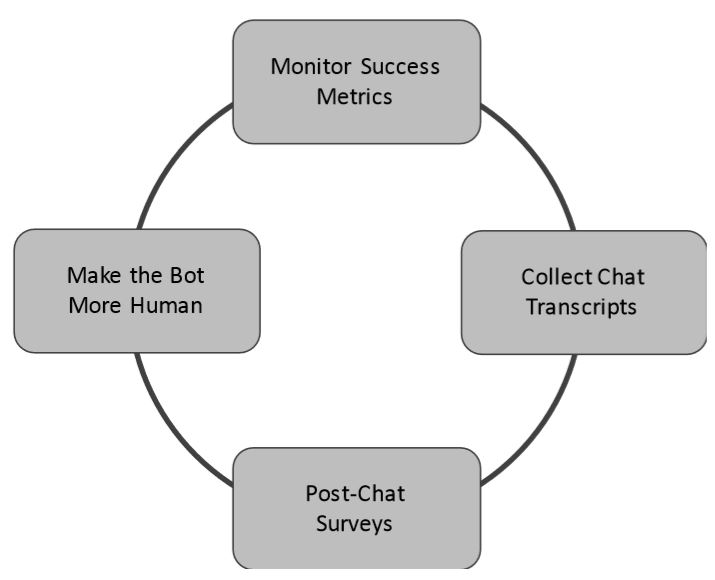Chatbots aren’t a set-it-and-forget-it software. The best chatbots improve over time and it is understood that making chatbots live isn't all in the chatbot development. Chatbots powered by AI learn how to better serve their purposes over time. Here is a list of ways to improve your chatbot as time passes after the chatbot is live.
Chatbot Continuous Improvement
To improve a chatbot, you must make changes to it as time goes on. Chatbots should naturally learn and improve on their own but there are steps you can take to make sure your chatbot doesn't become stagnant.

Figure: Chatbot Continuous Improvement Process
1. Monitor Success Metrics
You must be sure to have conversation success metrics, and you should monitor them regularly. The metrics can be customer chat ratings, average chat length, etc. The metrics will change depending on business objectives and the chatbot’s purpose. You’ll need to monitor how your bot performs over time by comparing these metrics over different periods of time. This analysis will give a high-level view of how your bot is performing.
2. Collect Chat Transcripts
Make sure to collect chat transcripts after each chat so you can analyze them. This will help you identify any issues your customers are going through, and where your chatbot is falling behind. Identifying the bot’s weak spots and optimizing it is the key to improving your bot. You can get a sense of customer satisfaction by seeing what percentage of overall chats are positive, neutral or negative. Depending on your chatbot’s architecture, you should retrain the bot to learn how to overcome its weak spots. The key to solving both customer and your business’s problems is by covering the bot’s weaknesses.
3. Post-Chat Surveys
Include an optional survey link after each chat is completed. This will help you know how satisfied your customers are with the bot’s performance and give you metrics upon which the bot can be improved.
4. Make the Bot More Human
Even though you’re planning to deploy bots to chat with customers, they should still be as conversational as human beings. The bot should feel seamless and be able to answer natural-language questions from customers. Depending on the chatbot’s architecture, you should evaluate how the responses are for the customer queries.
















